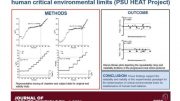The effect of a method for determining occupational pesticide exposure was investigated
According to a study published online April 13 in Occupational & Environmental Medicine, the method for assessing occupational pesticide exposure has no effect on risk estimates for prostate cancer, non-Hodgkin’s lymphoma, or Parkinson’s disease.
Johan Ohlander, Ph.D., of Utrecht University in the Netherlands, and colleagues looked at how the applied pesticide exposure assessment method influenced chronic disease risk estimates.
In three meta-analyses, the impact of exposure assessment method type on the summary risk ratio (sRR) of prostate cancer, non-Hodgkin’s lymphoma, and Parkinson’s disease was investigated (25, 29, and 32 studies, respectively).
Group-level assessments, self-reported exposures, expert-level assessments, and biomonitoring were some of the types of exposure assessment methods that were looked at.
According to the researchers, there was no statistically significant difference in sRRs between exposure assessment method types and any of the health outcomes.
The results were heterogeneous in nature, ranging from high in cancer studies to moderate and low in Parkinson’s disease studies.
Case-control studies yielded significantly higher sRR estimates than prospective cohort studies. Furthermore, later non-Hodgkin’s lymphoma studies had significantly higher sRR estimates than earlier non-Hodgkin’s lymphoma studies.
For prostate cancer, studies from North America had much higher estimates of the sRR than studies from Europe did, which is why.
When doing a systematic review of studies on the long-term health effects of pesticide exposure at work, “epidemiological study design, publication year, and study area should all be taken into account,” the authors write.





